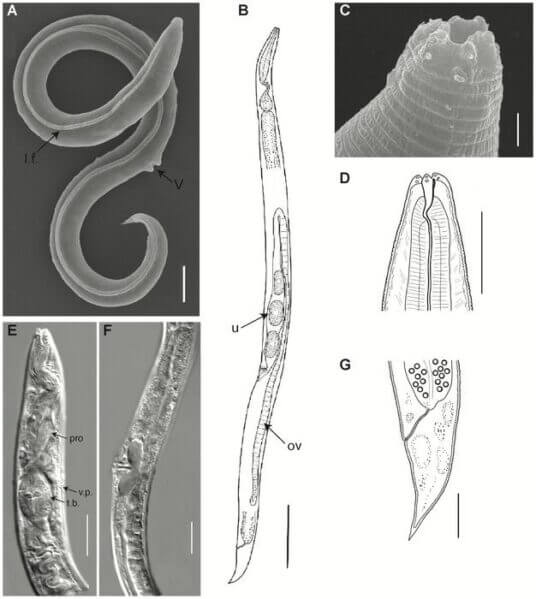A new study reveals that a soil nematode, revived from Siberian permafrost, had been in a dormant state for approximately 46,000 years.
The research was conducted by Anastasia Shatilovich from the Institute of Physicochemical and Biological Problems in Soil Science RAS in Russia, Vamshidhar Gade from the Max Planck Institute for Molecular Cell Biology and Genetics in Germany, and their colleagues. It was published on July 27, 2023, in the open-access journal PLOS Genetics.
Certain animals, including tardigrades, rotifers, and nematodes, have the ability to survive adverse conditions by entering a state known as “cryptobiosis.” In the past, nematode individuals were reanimated from samples retrieved from a fossilized burrow in silt deposits in the northeastern Arctic. The study found that radiocarbon analysis of plant material from the burrow indicated that the frozen deposits, situated 40 meters below the surface, had not thawed since the late Pleistocene, dating back to a period between 45,839 and 47,769 years ago.
To understand the nematode’s relationship to modern species, the researchers used genome sequencing, assembly, and phylogenetic analysis. They identified the nematode as a previously undescribed species, named Panagrolaimus kolymaensis. By comparing its genome with that of the model organism Caenorhabditis elegans, they discovered common genes involved in cryptobiosis. Both species displayed increased production of a sugar called trehalose when mildly desiccated in the laboratory. This sugar may aid them in surviving harsh desiccation and freezing. The study demonstrated that P. kolymaensis benefited from exposure to mild desiccation before freezing, which enhanced its survival at -80°C. This treatment also proved advantageous to C. elegans dauer larvae, as they survived 480 days at -80°C without any decrease in viability or reproduction after thawing.
This research significantly extends the longest known instance of cryptobiosis in nematodes by tens of thousands of years. The nematodes’ ability to adapt to extreme conditions, such as permafrost, for short periods may have enabled them to remain dormant over geological timescales.
The authors of the study also proposed, “This work also suggests that fluctuations in the environment also determine the time an organism can remain in a cryptobiotic state.”


